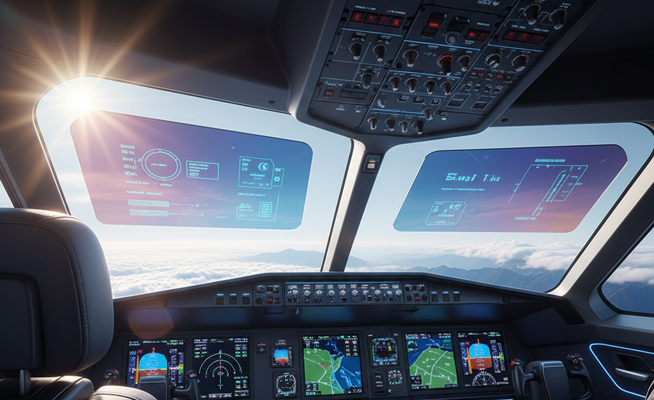According to Research Intelo, the global Smart Glass Cockpit Sun Visors market size was valued at USD 265 million in 2024 and is projected to reach USD 1.12 billion by 2033, expanding at a CAGR of 17.6 percent during 2024–2033.
One of the major factors driving the rapid growth of this market globally is the increasing adoption of advanced cockpit technologies in both commercial and military aviation, aiming to enhance pilot visibility, reduce glare and increase overall flight safety. This surge in demand is further supported by stringent safety regulations and the growing trend toward digitalisation and automation in the aerospace sector.
As aircraft manufacturers and operators increasingly adopt digital cockpit systems, the Smart Glass Cockpit Sun Visors market is poised for substantial growth in both commercial and defence aviation sectors.
KEY MARKET DRIVERS
Rise of next-generation cockpits
Avionics manufacturers are shifting toward augmented reality displays, touchscreen interfaces, and panoramic windows in future aircraft designs. Smart glass visors complement these developments by enabling clean, unobstructed cockpit layouts while maintaining glare protection.
Regulatory push for enhanced pilot vision
Government and aviation authorities have been increasingly focused on reducing pilot workload and visual hazards. Regulations encouraging better light management, as well as airline preferences for safer, more controlled cockpit environments, have accelerated the adoption of smart visors
Demand from business jets and advanced air mobility (AAM)
As the AAM sector gains traction, manufacturers are incorporating intelligent glare-control systems to improve visibility during low-altitude urban operations.
KEY CHALLENGES
High initial investment
Smart glass systems remain more expensive than conventional cockpit visors, which can slow adoption for older fleets and budget-sensitive operators.
Certification complexities
As aviation components, smart visors must meet stringent safety, fire-resistance, and durability standards. Lengthy certification cycles can delay deployment.
Maintenance and integration
Although smart visors reduce glare effectively, integrating them with cockpit systems and ensuring long-term performance across temperature extremes pose engineering challenges.
FUTURE OUTLOOK
Automation and AI-based tint control
The next phase of smart visor evolution includes AI-driven systems capable of predicting light conditions based on flight route, time of day and weather forecasts.
Wider adoption in commercial aviation
As costs gradually decrease and reliability improves, smart cockpit visors are expected to become standard equipment in new commercial aircraft deliveries by the end of the decade.
Expansion into electric and urban aviation
With the AAM market expected to scale rapidly, smart sun visors will become essential components of air taxis and electric aircraft, where visibility in complex urban lighting environments is critical.






